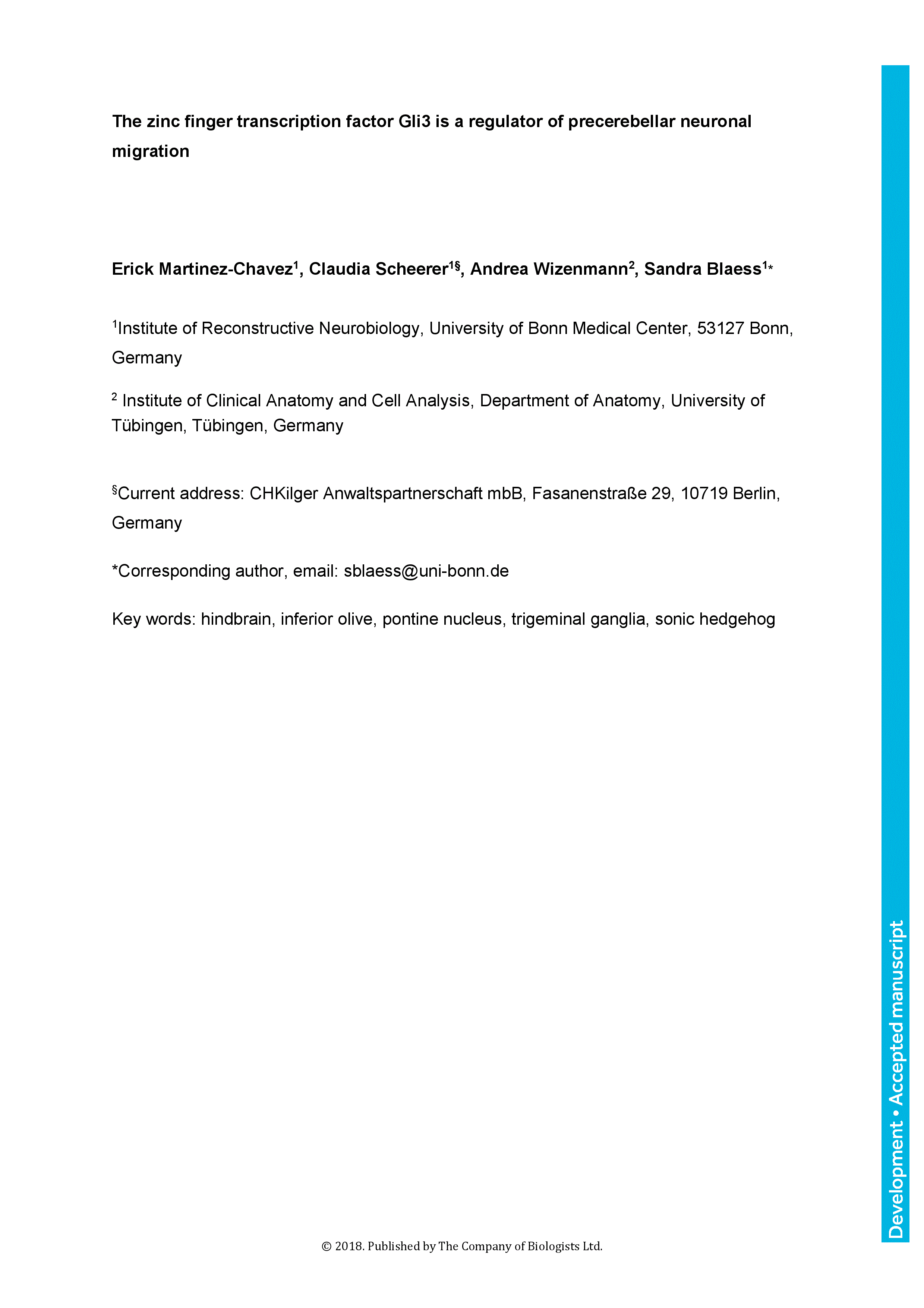Hindbrain precerebellar neurons arise from progenitor pools at the dorsal edge of the embryonic hindbrain, the caudal rhombic lip. These neurons follow distinct migratory routes to establish nuclei that provide climbing or mossy fiber inputs to the cerebellum. Gli3, a zinc transcription factor in the Sonic hedgehog signaling pathway, is an important regulator of dorsal brain development. We demonstrate that in Gli3 null mutant mice disrupted neuronal migratory streams lead to a disorganization of precerebellar nuclei. Precerebellar progenitors are properly established in Gli3 null embryos and using conditional gene inactivation, we provide evidence that Gli3 does not play a cell-autonomous role in migrating precerebellar neurons. Thus, Gli3 likely regulates the development of other hindbrain structures, such as non-precerebellar nuclei or cranial ganglia and their respective projections, which may in turn influence precerebellar migration. While the organization of non-precerebellar hindbrain nuclei appears to be largely unaffected in absence of Gli3, trigeminal ganglia and their central descending tracts are disrupted. We show that rostrally migrating precerebellar neurons are normally in close contact with these tracts, but are detached in Gli3 null embryos.
The zinc finger transcription factor Gli3 is a regulator of precerebellar neuronal migration
Current address: CHKilger Anwaltspartnerschaft mbB, Fasanenstraße 29, 10719 Berlin, Germany
Currently Viewing Accepted Manuscript - Newer Version Available
Erick Martinez-Chavez, Claudia Scheerer, Andrea Wizenmann, Sandra Blaess; The zinc finger transcription factor Gli3 is a regulator of precerebellar neuronal migration. Development 2018; dev.166033. doi: https://doi.org/10.1242/dev.166033
Download citation file:
Advertisement
Call for papers: Uncovering Developmental Diversity

Development invites you to submit your latest research to our upcoming special issue: Uncovering Developmental Diversity. This issue will be coordinated by our academic Editor Cassandra Extavour (Harvard University, USA) alongside two Guest Editors: Liam Dolan (Gregor Mendel Institute of Molecular Plant Biology, Austria) and Karen Sears (University of California Los Angeles, USA).
Choose Development in 2024

In this Editorial, Development Editor-in-Chief James Briscoe and Executive Editor Katherine Brown explain how you support your community by publishing in Development and how the journal champions serious science, community connections and progressive publishing.
Journal Meeting: From Stem Cells to Human Development

Register now for the 2024 Development Journal Meeting From Stem Cells to Human Development. Early-bird registration deadline: 3 May. Abstract submission deadline: 21 June.
Pluripotency of a founding field: rebranding developmental biology

This collaborative Perspective, the result of a workshop held in 2023, proposes a set of community actions to increase the visibility of the developmental biology field. The authors make recommendations for new funding streams, frameworks for collaborations and mechanisms by which members of the community can promote themselves and their research.
Read & Publish Open Access publishing: what authors say

We have had great feedback from authors who have benefitted from our Read & Publish agreement with their institution and have been able to publish Open Access with us without paying an APC. Read what they had to say.



